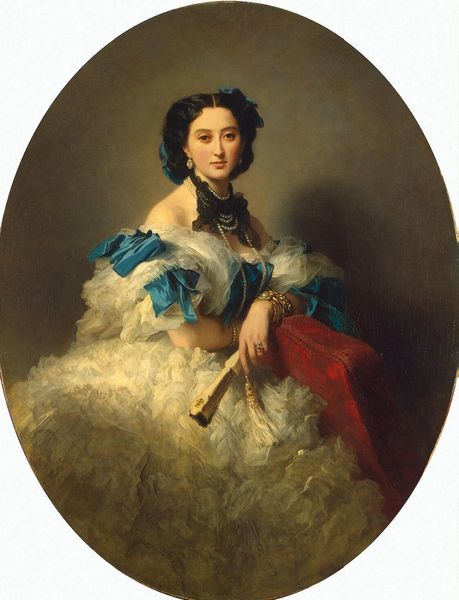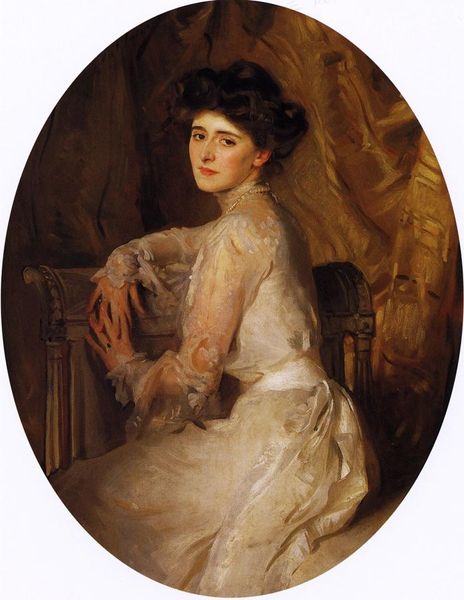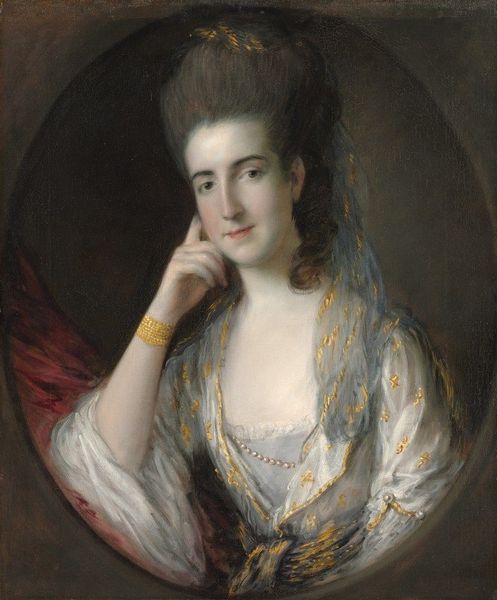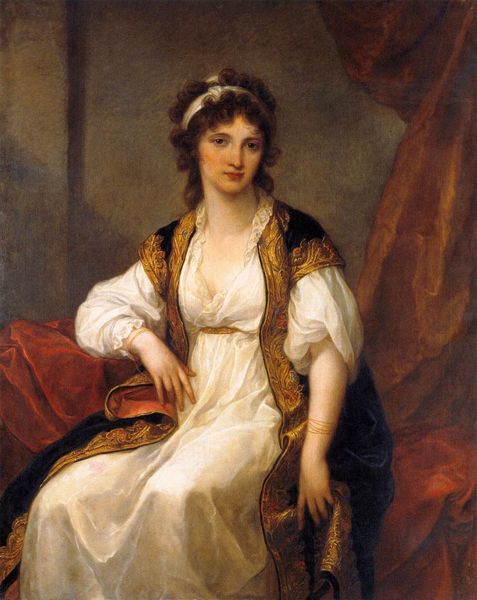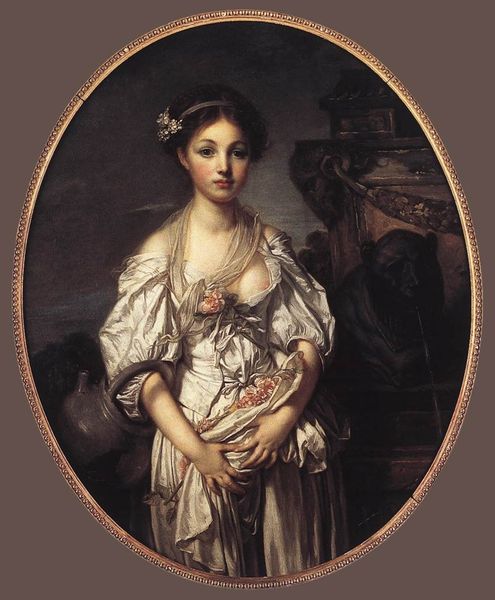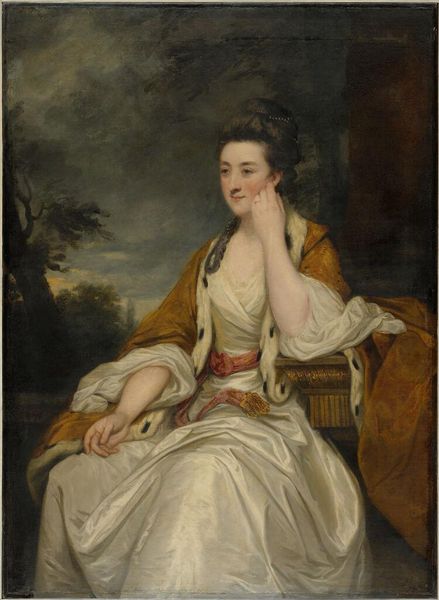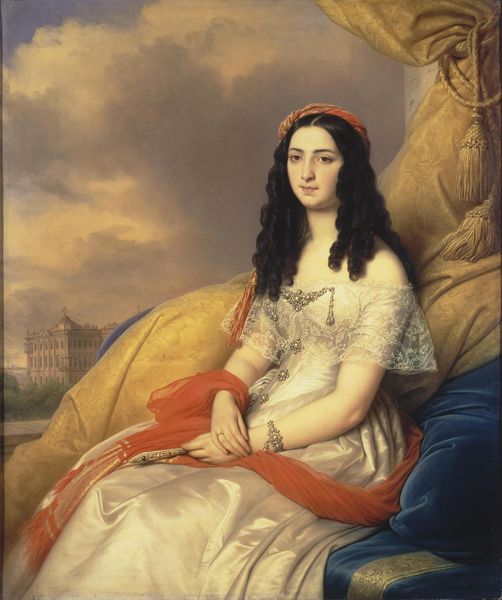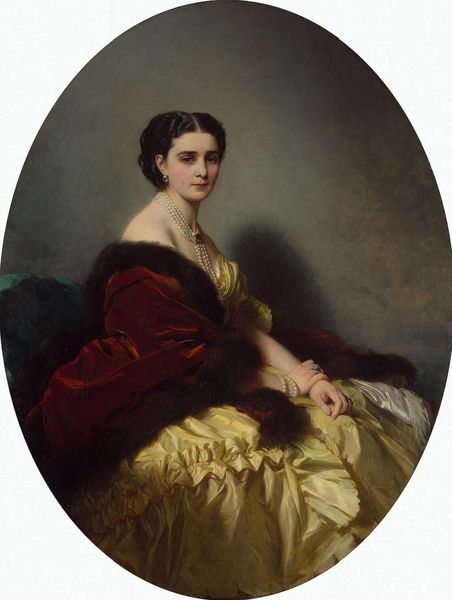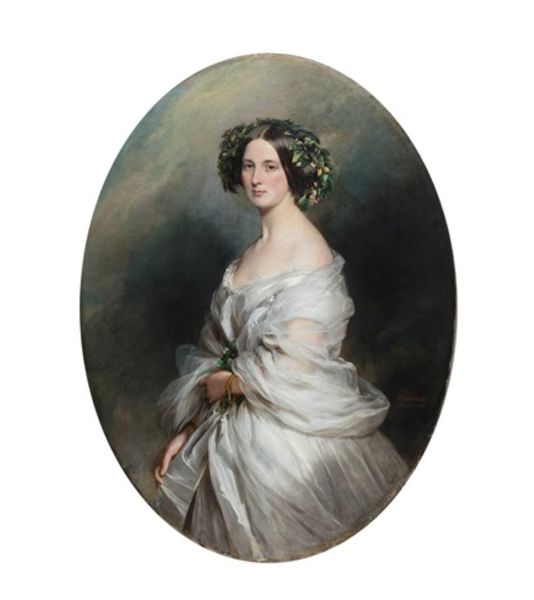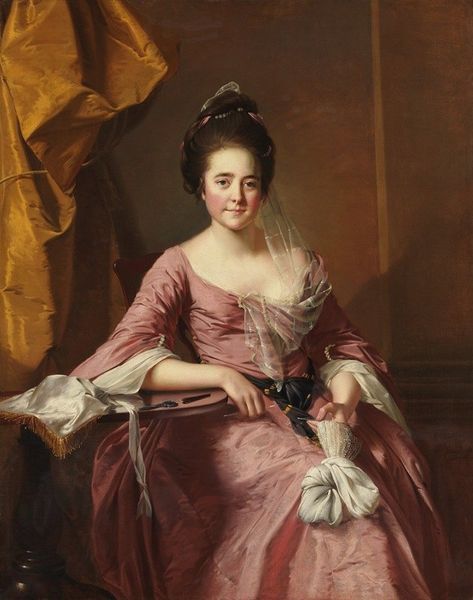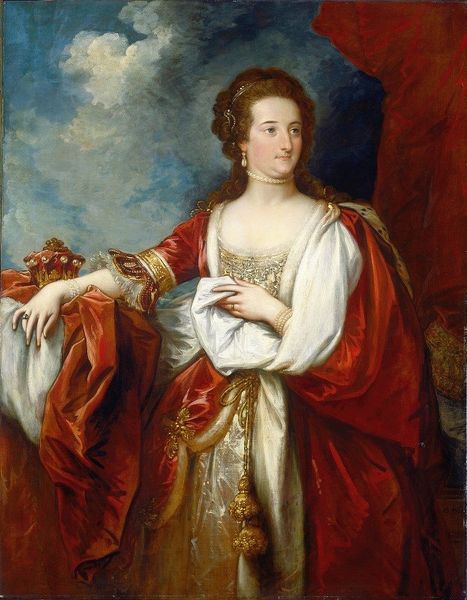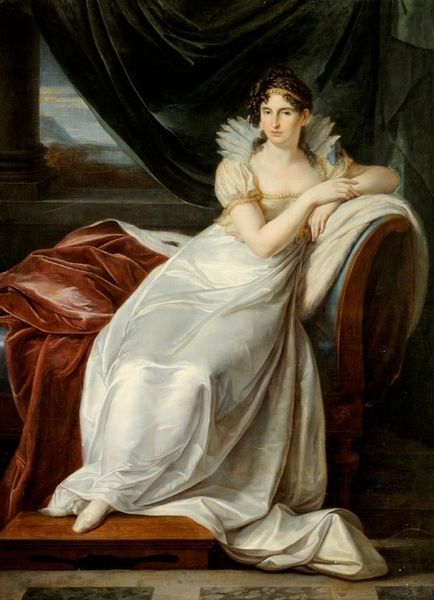
Copyright: Public domain
Curator: We’re looking at a portrait of Wienczyslawa Barczewska, Madame de Jurjewicz, by Franz Xaver Winterhalter, created around 1860. It's oil paint on canvas, and it’s currently held in a private collection. Editor: The first thing that strikes me is the opulent fabric. It's almost liquid, the way it catches the light. You can almost feel the texture of that silk. Curator: Absolutely, Winterhalter was a master of portraying wealth and status. Consider the cultural context: portraiture was often commissioned by the upper classes to display their power and legacy. Who gets immortalized, and how, tells us a lot about social values at the time. Editor: And speaking of values, that lace shawl… You can see how meticulously it's rendered, but more than that, you have to wonder about the labor that went into creating that level of detail, the communities of female artisans and how much they earned, and how much their employers or governments were concerned for their wellbeing. Curator: Indeed, such finery underpinned social hierarchies and a complex network of production, which the wealthy patrons, depicted so serenely, were benefiting from. But consider also the influence of Romanticism; there's an almost dreamlike quality to the composition, enhanced by that oval frame. It softens the rigid conventions of formal portraiture. It’s less a statement and more a fantasy of beauty. Editor: I find that idea of ‘fantasy’ to be key. It speaks to the politics of image-making itself. Who had access to have their image idealised in such a fashion, and to have that fantasy immortalised, disseminated, and exhibited? And how much control did women have over how they would be represented? Curator: The painting is held in a private collection so its public display is limited. Still, through reproductions, it participates in constructing a particular historical narrative around feminine beauty and aristocratic taste. The very act of looking at this work, centuries later, implicates us in that historical narrative, doesn’t it? Editor: It makes you think about our contemporary obsessions with image making, where social media and advertising create ever more fantasies of perfection, and the labor behind the clothing that adorns it. Curator: Definitely something to think about as we continue our tour. Editor: Indeed. I hadn’t considered that aspect of her social environment and what went into her visual allure. It opens the painting up entirely, really.
Comments
No comments
Be the first to comment and join the conversation on the ultimate creative platform.
